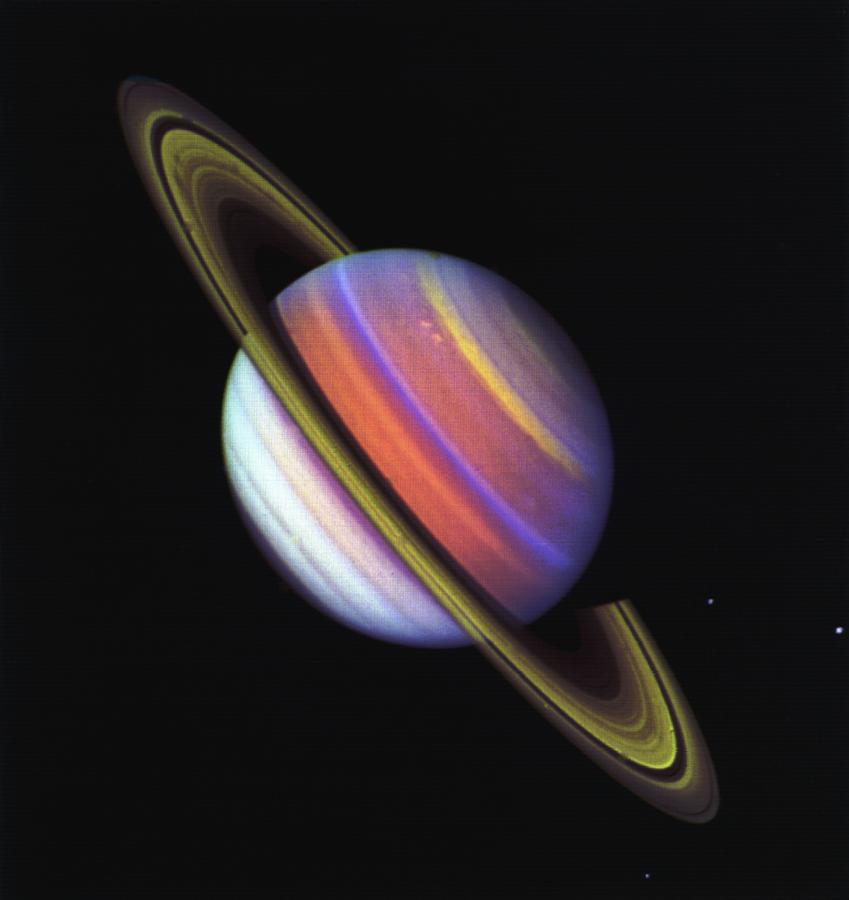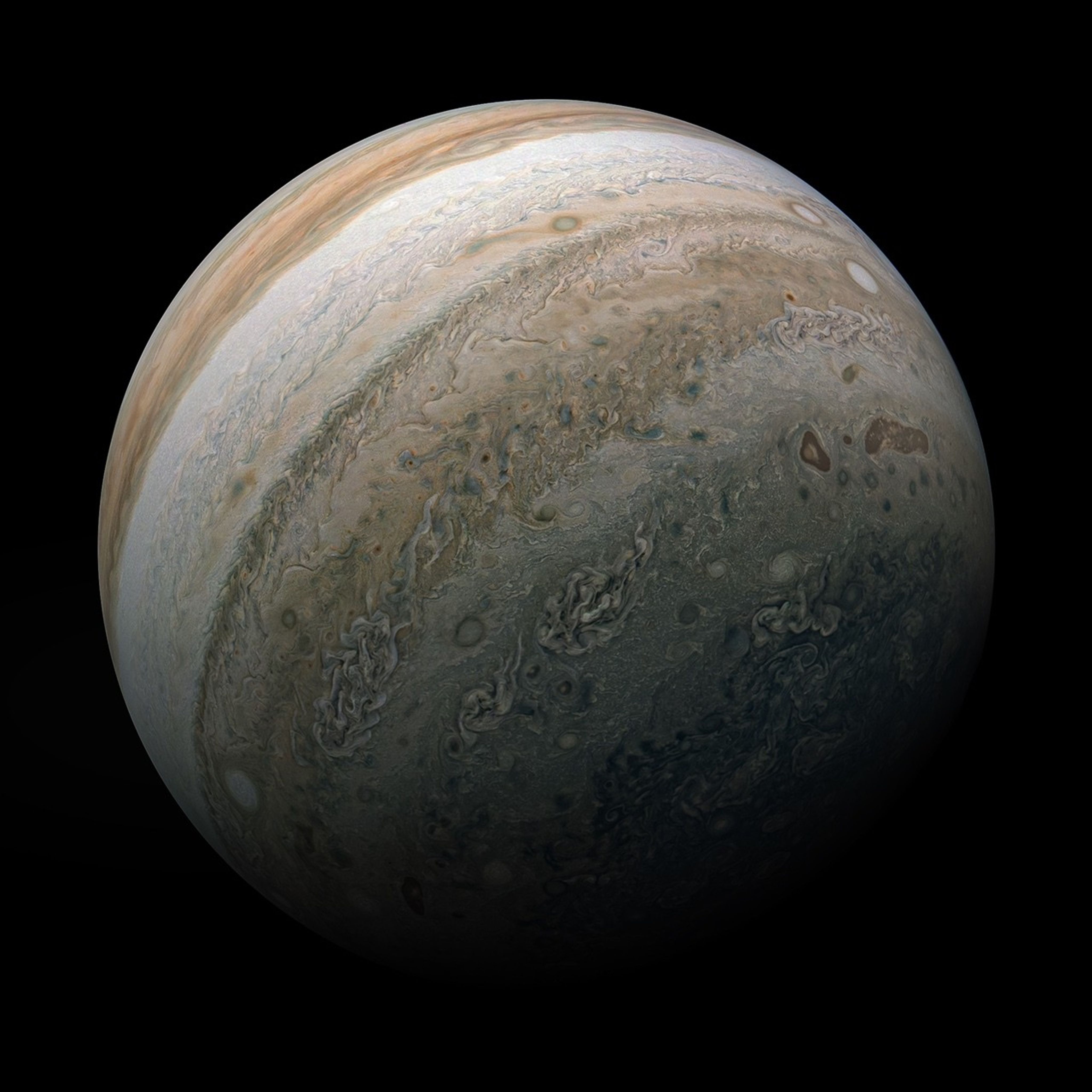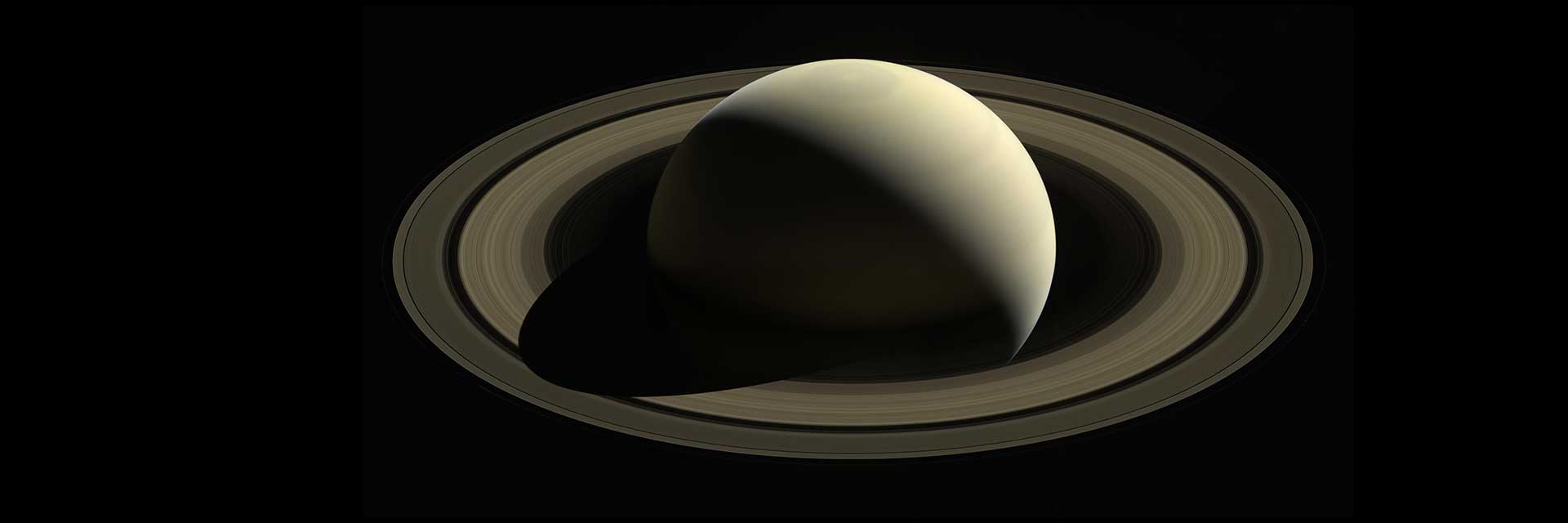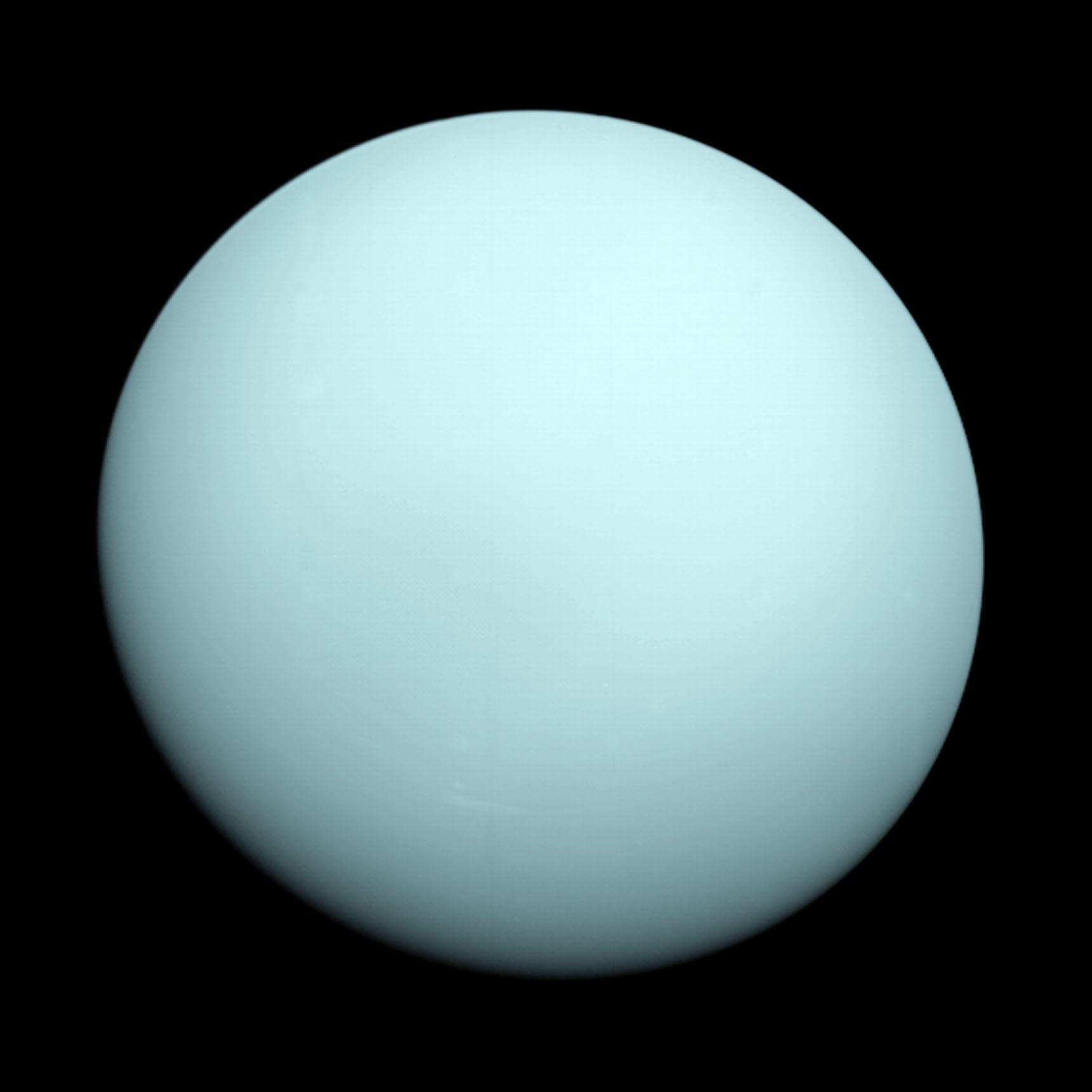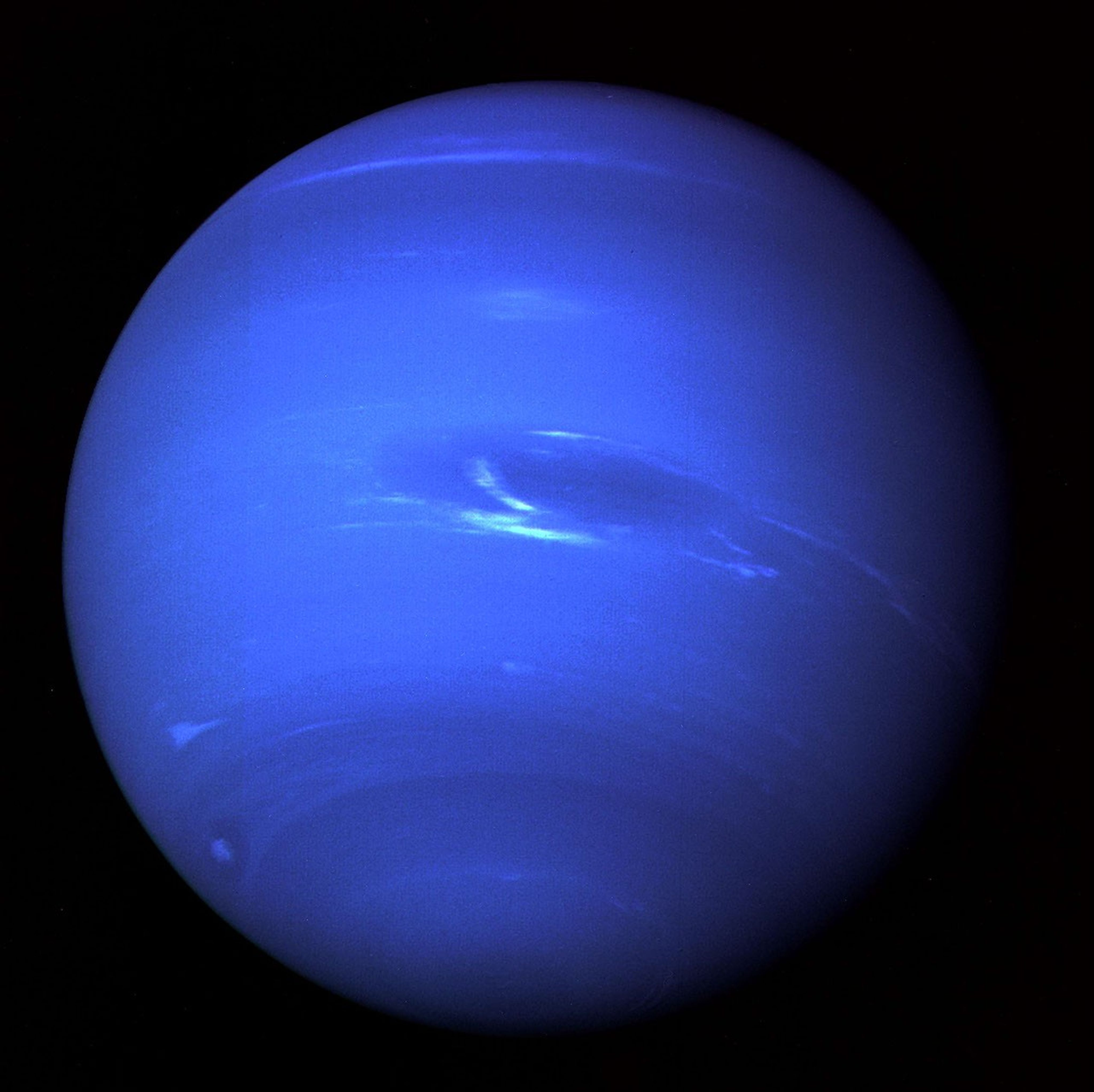FAQ
Quick Facts
Can the Voyager imaging cameras be turned back on?
It is possible for the cameras to be turned on, but it is not a priority for Voyager's Interstellar Mission. After Voyager 1 took its last image (the "Solar System Family Portrait" in 1990), the cameras were turned off to save power and memory for the instruments expected to detect the new charged particle environment of interstellar space. Mission managers removed the software from both spacecraft that controls the camera. The computers on the ground that understand the software and analyze the images do not exist anymore. The cameras and their heaters have also been exposed for years to the very cold conditions at the deep reaches of our solar system. Even if mission managers recreated the computers on the ground, reloaded the software onto the spacecraft and were able to turn the cameras back on, it is not clear that they would work.
In addition, it is very dark where the Voyagers are now. While you could still see some brighter stars and some of the planets with the cameras, you can actually see these stars and planets better with amateur telescopes on Earth.
What instruments on the spacecraft are still working and what have been turned off?
View an updated list of the status o/f Voyager instruments: Mission Status.
How long can Voyager 1 and 2 continue to function?
Editor's note: Both Voyagers were still functioning in January 2024.
The radioisotope thermoelectric generator (RTG) on each spacecraft puts out 4 watts less each year. Because of this diminishing electrical power, the Voyager team has had to prioritize which instruments to keep on and which to turn off. Heaters and other systems have also been turned off one by one as part of power management.
The Voyager team has chosen to keep operating the instruments that are the most likely to send back key data about the heliosphere and interstellar space -- the fields and particles instruments. Engineers expect to begin turning off fields and particles science instruments one by one, starting in 2020 for Voyager 2. Voyager 2 will have to start turning science instruments off sooner because it is currently operating one more instrument than Voyager 1. Engineers expect each spacecraft to continue operating at least one science instrument until around 2025.
Even if science data won't likely be collected after 2025, engineering data could continue to be returned for several more years. The two Voyager spacecraft could remain in the range of the Deep Space Network through about 2036, depending on how much power the spacecraft still have to transmit a signal back to Earth.
Where are Voyager 1 and 2 today?
Where is Voyager 1 going? When will it get there? How about Voyager 2?
Voyager 1 is escaping the solar system at a speed of about 3.5 AU per year, 35 degrees out of the ecliptic plane to the north, in the general direction of the solar apex (the direction of the sun's motion relative to nearby stars). Voyager 1 will leave the solar system aiming toward the constellation Ophiuchus. In the year 40,272 AD (more than 38,200 years from now), Voyager 1 will come within 1.7 light years of an obscure star in the constellation Ursa Minor (the Little Bear or Little Dipper) called AC+79 3888.
Voyager 2 is escaping the solar system at a speed of about 3.1 AU per year, 48 degrees out of the ecliptic plane to the south toward the constellations of Sagittarius and Pavo. In about 40,000 years, Voyager 2 will come within about 1.7 light years of a star called Ross 248, a small star in the constellation of Andromeda..
Where do we consider our solar system to end; Pluto's orbit? Solar apex?
The solar system may be broadly defined as consisting of all those objects that are ultimately governed by the gravitational field of the sun. In addition to the planets, moons, asteroids and dust of the planetary system, it includes the distant bodies of the Kuiper Belt and Oort cloud, the last extending perhaps as far as 50,000 astronomical units (1 AU = about 93 million miles). The gravitational influence of the sun may extend as far as 2 light years. (From "Solar System", James H. Shirley, in Encyclopedia of Planetary Science).
That said, Pluto (and sometimes Neptune) is the most distant planet in our planetary system. The Voyagers passed the orbit of Neptune (which was furthest at the time) in August 1989. Neither flew by Pluto, which was elsewhere in its orbit at the time.
Another concept is the heliosphere, which is a bubble around the sun created by the outward flow of the solar wind from the sun and the opposing inward flow of the interstellar wind. That heliosphere is the region influenced by the dynamic properties of the sun that are carried in the solar wind - such as magnetic fields, energetic particles, solar wind plasma, etc. Voyager 1, which is traveling up away from the plane of the planets, passed out of the heliosphere into interstellar space, beyond the bubble of the solar wind, on Aug. 25, 2012. Voyager 2, which is traveling below the plane of the planets, is expected to enter interstellar space in the coming years.
Have any human-made objects ever exited the solar system?
Sometimes, it is written that Voyager and Pioneers 10 and 11 have exited the solar system. Though all of these spacecraft have gone beyond all the planets of the solar system, they have not exited the solar system, based on the scientific definition. To leave the solar system, they need to pass beyond the Oort Cloud. Voyager 1 was the first-ever object to reach interstellar space on August 25, 2012 when it passed beyond the sun’s realm of plasma influence (the heliosphere) and it is the most distant human-made object. But it will take about 300 years for Voyager 1 to reach the inner edge of the Oort Cloud and possibly about 30,000 years to fly beyond it. Voyager 2 has not yet reached interstellar space or exited the heliosphere (bubble of solar plasma). Pioneer 10 and 11 are no longer transmitting science data back to Earth.
Are the distance counters rolling backwards?
Often they are, and it's actually not an error. This is caused by the fact that Earth moves around the sun more quickly than either Voyager spacecraft is departing from Earth. So, at certain times of the year, the distance between Earth and each Voyager actually decreases.
Did either of the Voyagers visit Pluto? Why didn't the Voyagers fly by Pluto?
Both Voyagers flew beyond the orbit of Pluto/Neptune in 1989, but neither flew by Pluto, which was elsewhere in its orbit at the time. It was never planned that the Voyagers would visit Pluto.
The original mission of Voyager was to explore Jupiter and Saturn. Two spacecraft were sent on slightly different paths, first to Jupiter and then, with gravity assists, on to Saturn. Voyager 1 could have been aimed on to Pluto, but exploration of Titan and the rings of Saturn was a primary scientific objective. This caused the trajectory to be diverted upward out of the ecliptic plane such that no further planetary encounters were possible for Voyager 1. Once Voyager 1 had successfully gathered data at Titan, Voyager 2 was allowed to go on to Uranus and Neptune. Voyager 2, theoretically, could have been aimed for Pluto, but the aim point would have been inside the planet of Neptune - not very practical. NASA's New Horizons spacecraft visited Pluto in July 2015.
Pioneers 10 and 11 had preceded the Voyagers to Jupiter and the asteroid belt was a major concern for them. By the 1960's more than 3000 minor planets had been discovered and their orbits well determined. Even 50,000 minor bodies spread over the volume of space occupied by the asteroid belt would produce little direct danger, although a chance collision with an uncatalogued object was possible.
"While the largest of the asteroids were known and their orbits charted, many of the asteroids moved in unknown orbits. Although the risk of a spacecraft colliding with a charted asteroid was negligible, there was no way to estimate how many particles the size of a grain of sand might be present in the asteroid belt to collide with the spacecraft and seriously damage it". (From Pioneer, First to Jupiter, Saturn and Beyond, NASA SP-446, 1980) Only by going there could the danger be properly assessed - and Pioneer was first.
I was reading Dr. Carl Sagan's biography recently and found that he persuaded NASA administrators to turn one of the Voyager space probes around in order to take a last image of the solar system. Is this true? Do the craft send back any images of where they are?
I think you are referring to the series of photos taken by Voyager 1 on Valentine's Day 1990. These were the final images taken by either of the Voyager spacecraft.
On Feb. 14, 1990, after the spacecraft had passed the orbits of Neptune and Pluto, the cameras of Voyager 1 pointed back toward the sun and took a series of pictures of the sun and the planets, making the first ever 'portrait' of our solar system as seen from the outside.

I can not locate a copy of the Murmurs of Earth CD. Would you know of a vendor that might sell copies of it?
There was a book and CDROM published by Warner New Media in 1992. The book was a reprint of the Carl Sagan, et al, "Murmurs of Earth" that was originally published in 1978.
Carl Sagan and his colleagues did the assemblage of the information on the Voyager Golden Phonograph Record. Most of the material they used was copyrighted by the creators/owners and Sagan had to get copyright releases in order to assemble the original record. Subsequently, Warner Multimedia was able to obtain copyright releases for the 1992 version of "Murmurs of Earth", by Carl Sagan, et al and included all the sounds and songs on the CDROM set that accompanied the Warner New Media release of the book. We have included on the Voyager web site only that information for which we were able to get release, that's why everything, especially the music and the photos, is not there.
Unfortunately, the book and CDROM are no longer being published and are hard to find as a set. Your best bet to find one quickly may be in a public or university library or at a used bookstore. You might try used bookstores on line at http://www.bookfinder.com/ and search on:
Author: Carl Sagan
Title: Murmurs of Earth
You can find many instances where the book is for sale at prices around $40 US or less (most less than $20), but few (if any) include the CDROM. Look for availability of 1992 or later versions.
If there is intelligent life in our universe and they were not a peace loving species, wouldn't the information on the Voyager be enough to destroy human kind?
We have received almost nothing but praise for the inclusion of the Golden Phonograph Record on Voyager. We have also received lots of compliments on the contents, however, that praise rightly belongs to Carl Sagan and his colleagues who chose, assembled and got permission to use the material.
There were a few detractors, even as Sagan was formulating the disk.
In the Sagan, et al book, "Murmurs of Earth, the Voyager Interstellar Record", while describing some of his earlier work in sending messages from the Arecibo radar, spoke of two protests to that effort. Excerpts from that passage follow:
"One was from a few scientists who worried that we hadn't corrected for the speed of Earth in space in launching the message. ...............The other protest was a serious one, made by Sir Martin Ryle, a Nobel laureate and the Astronomer Royal of England. He wrote with great anxiety that he felt it was very hazardous to reveal our existence and location to the galaxy. For all we know, any creatures out there were malevolent or hungry, and once they knew of us, the might come to attack or eat us...........Many other less knowledgeable people had the same concerns.
"The fact is, for better or for worse, we have already announced our presence and location to the universe, and continue to do so every day. There is a sphere of radio transmission about thirty light years thick expanding outward at the speed of light, announcing to every star it envelops that the earth is full of people. Our television programs flood space with signals detectable at enormous distances by instruments not much greater than our own. It is a sobering thought that the first news of us may be the outcome of the Super Bowl.
"........... Whether or not Sir Martin Ryle is justified in his anxieties about revealing the location of our civilization is of course a debatable subject. Even so, it is too late to worry about it, so we might as well try to be friendly".
What were the most important discoveries of the Voyager space probes?
There are so many. Voyager is probably the most scientifically productive mission ever. It was only the second mission to visit Jupiter and Saturn and the only one to visit Uranus and Neptune. Voyager 1 and 2 obtained the first detailed profiles of the atmospheres of Saturn, Uranus and Neptune and improved our understanding of the characteristics of the atmosphere of Jupiter. The Voyager spacecraft revealed the enormous amount of detail in the rings of Saturn, discovered the rings of Jupiter and provided the first detailed images of the rings of Uranus and Neptune. Voyager imaged Earth's moon and discovered twenty-three new moons at the outer planets. Voyager made significant improvements in the measurements of the magnetospheres at Jupiter and Saturn and provided the first measurements of the magnetospheres at Uranus and Neptune. The significance of the Voyager is the vast amount of new knowledge about our outer solar system it provided and the interest in further exploration it generated. That interest has resulted in the Galileo mission to Jupiter and the Cassini mission to Saturn as well as the discovery of three new satellites at Saturn using Earth-based instruments.
Discovery of active volcanism on Io, a satellite of Jupiter, was probably the greatest surprise. It was the first time active volcanoes had been seen on another body in the solar system. It appears that activity on Io affects the entire Jovian system.
How big is Voyager? How much does it weigh?
The Voyager spacecraft weight, including hydrazine, at launch was 815 kg or about 1797 pounds. It was almost the weight and size of a sub-compact car. The current approximate weight of Voyager 1 is 733 kg and Voyager 2 is 735 kg. The difference is in the amount of hydrazine remaining. Hydrazine is being used to control the spacecrafts' attitude.
The spacecraft, without the various booms could fit inside a cube that is about 4 meters on each side. The approximate measurements of the different structures follow:
- The high gain antenna is 3.7 meters across (diameter).
- The magnetometer boom is 13 meters long
- The two Planetary Radio Astronomy and Plasma Wave antenna are 10 meters long.
- The Radioisotope Thermoelectric Generator boom is 3.7 meters long
- The science instrument boom (near top of picture) is 3 meters long.
- The Bus Housing Electronics is about 1.8 meters in diameter.
The spacecraft height - from the top of the reflector structure in the middle of the high gain antenna to the bottom of the triangular feet below the bus housing electronics - is about 3.8 meters
The launch vehicle was a Titan III E/ Centaur rocket, which stands nearly 50 m (164 ft) high and weighs almost 635,000 kg (1.4 million lb).
Is it true that a sketch by Da Vinci is included in the "Message to the Universe" of Voyagers 1 and 2?
There are messages on the Voyagers in the form of a phonograph record and drawings on the cover that protects the record. However, Leonardo Da Vinci's Vitruvian Man was not part of the Voyager Golden Phonograph Record, the Voyager cover, or the Pioneer plaque. Read more about the golden record.
What kind of computers are used on the Voyager spacecraft?
There are three different computer types on the Voyager spacecraft and there are two of each kind. Total number of words among the six computers is about 32K.
- Computer Command System (CCS) - 18-bit word, interrupt type processors (2) with 4096 words each of plated wire, non-volatile memory.
- Flight Data System (FDS) - 16-bit word machine (2) with modular memories and 8198 words each
- Attitude and Articulation Control System (AACS) - 18-bit word machines (2) with 4096 words each.
According to my calculations, that's a total of about 68KB, or small potatoes compared to today's microprocessors. We probably could perform all functions with one of today's boards and still have room for solid state data storage and much more fault detection software. We would still need a second unit for redundancy. Today's microprocessors are also much faster than the chips used on Voyager and a comparative system would use less electrical power. On the other hand, software might be more complicated as opposed to that used in an interrupt type system, but it would be much more capable and more flexible.
Let's look closer at the CCS. The CCS has two main functions: to carry out instructions from the ground to operate the spacecraft, and to be alert for a problem or malfunction and respond to it. Two identical 4096- word memories contain both fixed routines (about 2800 words) and a variable section (about 1290 words) for changing science sequences. The CCS issues commands to the AACS for movement of the scan platform or spacecraft maneuvers; to the FDS for changes in instrument configurations or telemetry rates and to numerous other subsystems within the spacecraft for specific actions. Fault-protection algorithms are also stored in the CCS, occupying roughly 10 percent of the CCS memory.
The main functions of the FDS are to collect data from, and controls the operations of, the scientific instruments; and to format engineering and science data for on-board storage and/or real-time transmission. The FDS also keeps the spacecraft "time" and provides frequency references to the instruments and other spacecraft subsystems.
The Voyager spacecraft computers are interrupt driven computer, similar to processors used in general purpose computers with a few special instructions for increased efficiency. The programming is a form of assembly language.
There is no clock chip, as such, in the spacecraft. The "clock" is really a counter, based on one of several electronically generated frequencies. These frequencies, based on a reference, generated by a very stable oscillator, are converted and fed to different locations in the spacecraft as synchronization signals, timers, counters, etc. The "clock" signal is part of the information telemetered to the ground and it is with ground software that we convert to day of year, time of day Greenwich Mean Time.
Voyager was built in-house at JPL; the computers were manufactured by General Electric to JPL specifications.
How fast are the Voyager computers?
Not very fast compared to today’s standards. The master clock runs at 4 MHz but the CPU’s clock runs at only 250 KHz. A typical instruction takes 80 microseconds, that is about 8,000 instructions per second. To put this in perspective, a 2013 top-of-the-line smartphone runs at 1.5 GHz with four or more processors yielding over 14 billion instructions per second.
What is the "direction" (constellation and/or star) both Voyager 1 & 2 and the Pioneers are "aimed" for, at present.
- Pioneer 10 is headed towards the constellation of Taurus (The Bull). It will take Pioneer over 2 million years to pass by one of the stars in the constellation.
- Pioneer 11 is headed toward the constellation of Aquila (The Eagle), Northwest of the constellation of Sagittarius. Pioneer 11 may pass near one of the stars in the constellation in about 4 million years.
- Voyager 1 is escaping the solar system at a speed of about 3.5 AU per year, 35 degrees out of the ecliptic plane to the north, in the general direction of the Solar Apex (the direction of the Sun's motion relative to nearby stars). Voyager 1 will leave the solar system aiming toward the constellation Ophiuchus. In the year 40,272 AD, Voyager 1 will come within 1.7 light years of an obscure star in the constellation Ursa Minor (the Little Bear or Little Dipper) called AC+79 3888.
- Voyager 2 is also escaping the solar system at a speed of about 3.1 AU per year, 48 degrees out of the ecliptic plane to the south toward the constellations of Sagitarrius and Pavo. In about 40,000 years, Voyager 2 will come within about 1.7 light years of a star called Ross 248, a small star in the constellation of Andromeda.
Where can I find pictures of what the Voyager spacecraft took?
You can view pictures from Voyager and other missions at several locations:
- NSSDC Planetary Image Catalog http://nssdc.gsfc.nasa.gov/imgcat
- Planetary Photojournal http://photojournal.jpl.nasa.gov/
- NSSDC Photo Gallery http://nssdc.gsfc.nasa.gov/photo_gallery
Is there some sort of plate with pictograms on the Voyager 1 spacecraft? Also is it similar to the Pioneer spacecraft plaque?
You asked about the Voyager plate. I'm assuming you mean the engravings on the aluminum record cover on each of the two Voyagers. You can see the record cover installed on the spacecraft bus. Also, from Carl Sagan's book, "Murmurs of Earth", here is a description of the cover engravings:
"In the upper left-hand corner is an easily recognized drawing of the phonograph record and the stylus carried with it. The stylus is in the correct position to play the record from the beginning. Written around it in binary arithmetic is the correct time of one rotation of the record, 3.6 seconds, expressed in time units of 0,70 billionths of a second, the time period associated with a fundamental transition of the hydrogen atom. The drawing indicates that the record should be played from the outside in. Below this drawing is a side view of the record and stylus, with a binary number giving the time to play one side of the record - about an hour.
"The information in the upper right-hand portion of the cover is designed to show how pictures are to be constructed from the recorded signals. The top drawing shows the typical signal that occurs at the start of a picture. The picture is made from this signal, which traces the picture as a series of vertical lines, similar to ordinary television (in which the picture is a series of horizontal lines). Picture lines 1, 2 and 3 are noted in binary numbers, and the duration of one of the "picture lines," about 8 milliseconds, is noted. The drawing immediately below shows how these lines are to be drawn vertically, with staggered "interlace" to give the correct picture rendition. Immediately below this is a drawing of an entire picture raster, showing that there are 512 vertical lines in a complete picture. Immediately below this is a replica of the first picture on the record to permit the recipients to verify that they are decoding the signals correctly. A circle was used in this picture to insure that the recipients use the correct ratio of horizontal to vertical height in picture reconstruction.
"The drawing in the lower left-hand corner of the cover is the pulsar map previously sent as part of the plaques on Pioneers 10 and 11. It shows the location of the solar system with respect to 14 pulsars, whose precise periods are given. The drawing containing two circles in the lower right-hand corner is a drawing of the hydrogen atom in its two lowest states, with a connecting line and digit 1 to indicate that the time interval associated with the transition from one state to the other is to be used as the fundamental time scale, both for the time given on the cover and in the decoded pictures.
"Electroplated onto the record's cover is an ultra-pure source of uranium-238 with a radioactivity of about 0.00026 microcuries. The steady decay of the uranium source into its daughter isotopes makes it a kind of radioactive clock. Half of the uranium-238 will decay in 4.51 billion years. Thus, by examining this two-centimeter diameter area on the record plate and measuring the amount of daughter elements to the remaining uranium-238, an extraterrestrial recipient of the Voyager spacecraft could calculate the time elapsed since a spot of uranium was placed aboard the spacecraft. This should be a check on the epoch of launch, which is also described by the pulsar map on the record cover."

